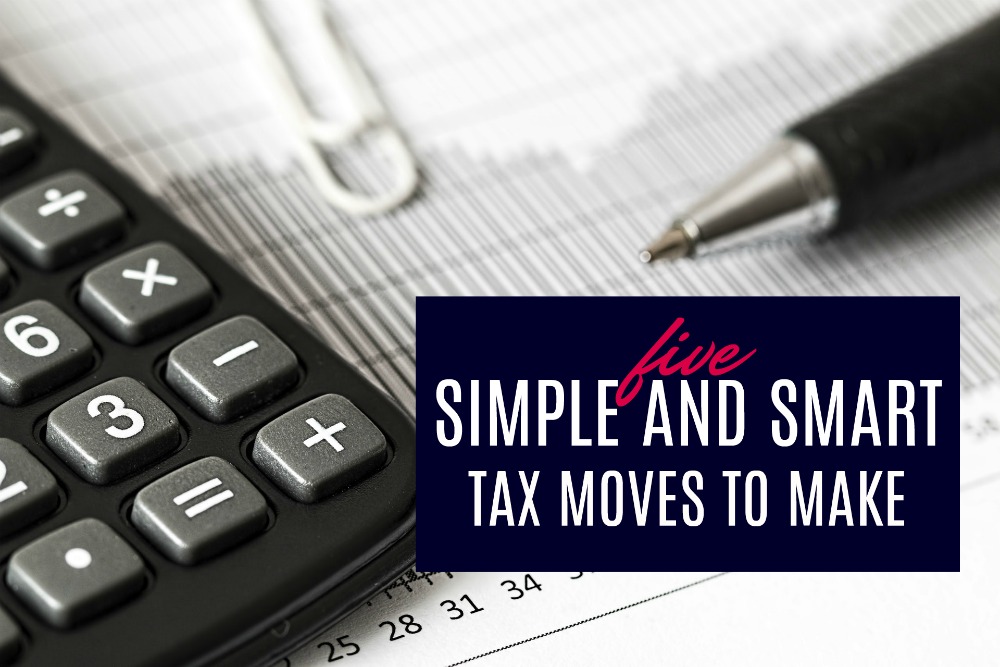 Tax season is nearly upon us and it’s bittersweet for most. Whether you think you might get a refund or are nervous about how much you might owe, it’s easy to loathe tax season and get stressed out or overwhelmed.
Tax season is nearly upon us and it’s bittersweet for most. Whether you think you might get a refund or are nervous about how much you might owe, it’s easy to loathe tax season and get stressed out or overwhelmed.
Ever since I started doing taxes as an independent, I’ve dreaded the process. All the paperwork, forms, fact-checking and foreign terminology made me feel uneasy. Now, I can tolerate tax time after choosing to get organized and take things one step at a time.
Preparing ahead of time always helps, but I realized there was no need to freak out during this time of year because my taxes always get filed and I survive.
Here are 5 simple and smart tax moves to make right now if you want to have a smooth tax season this year.
1. Check Your Filing Status
When you begin a job, you receive and complete a W-4 form which sets up payroll deductions from your paycheck for taxes. The most confusing part of this form is the section where it asks you to ‘claim a number of allowances’.
Generally, the more allowances you claim, the less will be withheld from your paycheck. The fewer allowances you claim more could be withheld from your paycheck which could result in you receiving a refund.
Ask your employer if you can review your W-4 form to adjust your allowances claimed if anything has changed. Be realistic and keep in mind that you don’t want to have too much or too little withheld from your paycheck because you could either owe money when you file or receive a rather large refund.
Receiving a refund generally isn’t considered a bad thing, but if it’s extra money that the government has withheld from your paycheck for the year, you probably could have put that money to better use by covering living expenses, or saving or investing it and receiving a higher return.
2. Bump Up Retirement Contributions and Consider Other Deductions
If you’re afraid you may be stuck with a huge tax bill, focus on contributing a little more to tax advantage accounts like your 401(k) during the year. This money is taken pre-tax so it can be deducted from your income meaning you won’t have to pay taxes until retirement.
Also during this time, make a list of other tax deductions you can make to reduce your taxable income. Talk to the person who does your taxes, or a CPA to help you come up with ideas. If you have a side hustle, you can deduct expenses associated with you operating that side hustle including internet, supplies, your telephone bill, courses and training, conferences and travel for networking events, monthly business expenses, etc.
You can also deduct costs spent searching for a job whether it was attending a job fair, paying for a FlexJobs membership, hiring someone to review your resume, etc.
3. Do a Profit/Loss Statement For Your Side Hustle
If you have a side hustle or side business, it’s important to track your income each month or at least quarterly as you’ll be expected to make quarterly estimated tax payments to the IRS. You can do this in a spreadsheet. Under each month, record all sources of side or self-employment income, then include all the expenses you incur including fees and some of the deductions mentioned above.
Keeping track of your income and expenses will allow you to stay organized and determine how much profit you truly made for the year after expenses were deducted.
I made the mistake of not tracking anything during my first year of freelancing as a side hustle. It wasn’t the end of the world when tax time came around. My accountant just sent me a formatted spreadsheet to use, and I filled everything out from the beginning. It took me about 60 – 90 minutes to comb through my income and expenses for each quarter but to avoid getting overwhelmed with this task, I broke it up and did a quarter each weekend until I reached the end of the year.
The easiest route is to do this month by month to avoid falling behind of course.
4. Plan to Claim and Deduct Education Expenses
If you are currently in school, keep in mind that you can claim tuition costs for up to $2,500 per year during higher education thanks to the American Opportunity Tax Credit (AOTC). To qualify, you just need to be enrolled in school on a part-time basis (minimum) for at least one semester during the tax year.
If you have been paying on student loans throughout the year, your lender should send you a tax form including how much you money you paid along with what amount went toward interest. As long as your student loan was used to pay educational expenses like tuition, room, and board, books and supplies, you can deduct up to $2,500 in student loan interest per year.
5. Plan to Use Your Refund Wisely
They say it’s never good to spend money before it’s received. However, if you’re expecting a tax refund, you can make plans for that money without taking any action until it hits your account.
This is important to make sure you have enough time to get clear on your goals and adjust your mindset so you avoid impulse purchases when you receive a large sum of money.
Consider making smart decisions with a tax refund like paying off debt, boosting your emergency fund, saving for a down payment on a home, investing in yourself and your career, or investing in the market. These aren’t super exciting ideas, but they will help you get ahead financially and get closer to building wealth.
Which tax moves are you making now and do you do small things year round to prepare for tax season? Why or why not?




I wish my online businesses were in any kind of position to attract tax 🙂
Just keep being consistent and allow time for your business to grow. Wishing you the best of luck!
Some great advice. I do think most people forget that a side hustle is technically a business and needs to be declared. You must take care and ensure you are keeping a log of what earnings you make in order to be able to stay on top of your finances and any taxes you must pay as a result of it.
Yes, that’s so important. I made the mistake of not tracking anything during my first year of side hustling and it was a hassle to get organized.